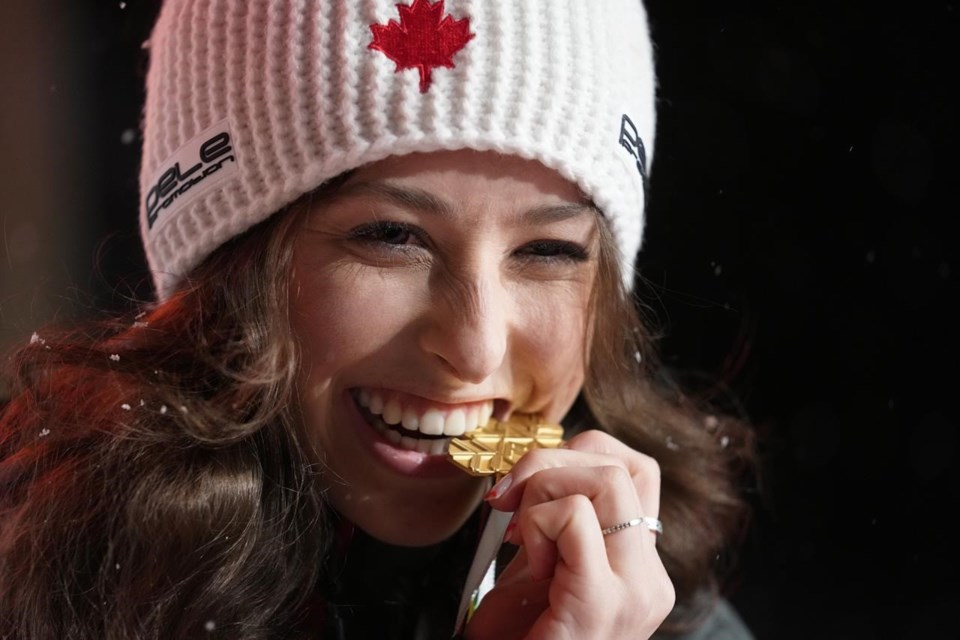Certified bee keeper Abigail Strate sees a parallel between a hive and the Canadian women's ski jump team based in Slovenia.
"There doesn't really seem to be a queen bee, but we're all just kind of workers and we all know our jobs," Strate said.
"We're all working together, trying not to get in each other's ways and try to make the smoothest path for all of us to be the best we can be. We kind of operate on a hive mind."
Four Calgarian women under the age of 25 have made Planica Nordic Centre and its valley their residence 10 months of the year since June 2021.
Reigning world champion Alexandria Loutitt, Nicole Maurer, Natalie Eilers and Strate open the women's World Cup season in Lillehammer, Norway with Saturday's normal hill event followed by Sunday's large hill.
Canadian ski jumping was in survival mode when Calgary's ski jumps built for the 1988 Olympic Games shuttered in 2018. The COVID-19 pandemic restricting travel to alternate venues in 2020 was another blow for the ski jumpers.
The 2010 Winter Games jumps in Whistler, B.C., weren't built with year-round training in mind because Calgary was the established hub of the national team. Plastic in-run coating for summer and fall training, for example, isn't available in Whistler.
Turning Whistler into the ski jumpers' base was cost prohibitive for Ski Jumping Canada after years of virtually no federal funding. The national sports organization instead established a base in Slovenia, which is a ski jumping powerhouse.
Austria's Janko Zwitter was recruited, part-time at first and then full time, to coach Canada with Slovenian Igor Cuznar his assistant.
Canada's women have since produced, and helped produce, historic results in the sport. OTP directed $400,000 in Sport Canada funding to the ski jumpers for the 2023-24 season.
"We're kind of a miracle group in a way," Strate said.
Loutitt, Strate, MacKenzie Boyd-Clowes and Matthew Soukup won bronze, and Canada's first Olympic medal in the sport, in the inaugural mixed team event in Beijing in 2022.
Loutitt, 19, claimed both the women's world large hill and world junior women's normal hill titles this year. In January, she became the first Canadian woman to win a World Cup.
Strate was a World Cup top-five finisher five times, including a bronze, last season. Canada's women finished sixth overall in the nation standings.
"It's not an easy choice to say, 'OK, I'm going to live halfway around the world with literally only knowing three other people,'" Loutitt said. "That's why our team has had so much success because the people who continue to jump were doing it not just because it was something they were good at or sport they loved. It was like another level of passion.
"We've been told by many of the strongest teams in the world that have dominated the sport for 100 years 'I know no one on our team who loves the sport the way you four girls do.'"
Zwitter previously coached Japan's Sara Takanashi, who holds a record 63 World Cup victories.
"Janko is one of the best ski jumping coaches of all time," Loutitt said. "He's trained the most successful athlete at the most crucial developmental stage of ski jumping.
"You have to have the right coach to be able to unlock your full potential and then having Janko working with Igor was a next step, where it wasn't just one athlete with this raw talent that you're working with.
"You have a whole group of girls that are starting to show major success and having really strong performances as a group."
Slovenia works for the Canadians on a few fronts. Travel within Europe is cheaper and easier on athlete bodies than commuting from Canada.
The women will carry Canada's ski jumping torch into this season because Boyd-Clowes is taking a break from the sport and Soukup has retired from the men's team.
Strate and Loutitt are concerned about Canada's gap for youngsters harbouring big aspirations in jumping as Loutitt did just a few years ago. Whistler, Squamish, B.C., and Red Deer, Alta., have small developmental jumps.
The Calgary club that brought them into the sport improvised after the loss of their Canada Olympic Park jumps by building one on the hill of a city landfill nicknamed the "dump jump."
Ski Jumping Canada also has a portable "Little Thunder" jump for children to try at events like the Calgary Stampede.
But there is no longer a 60-metre jump — the gateway to normal and large hills — in Canada. The next generation of jumpers have few opportunities to mix with and learn from their national-team heroines living abroad most of the year.
"It would work better if we could once in a while be training at home," Loutitt said. "I've worked really hard to set up a program where I can share this stuff with the younger girls and I can let them see the experience that we're having, but still, it's not the same as showing them.
"If I was just there and I was training in the same facilities, then they would understand it on a different level. It motivates you. It gives you that little push you need."
This report by The Canadian Press was first published Nov. 30, 2023.
Donna Spencer, The Canadian Press



